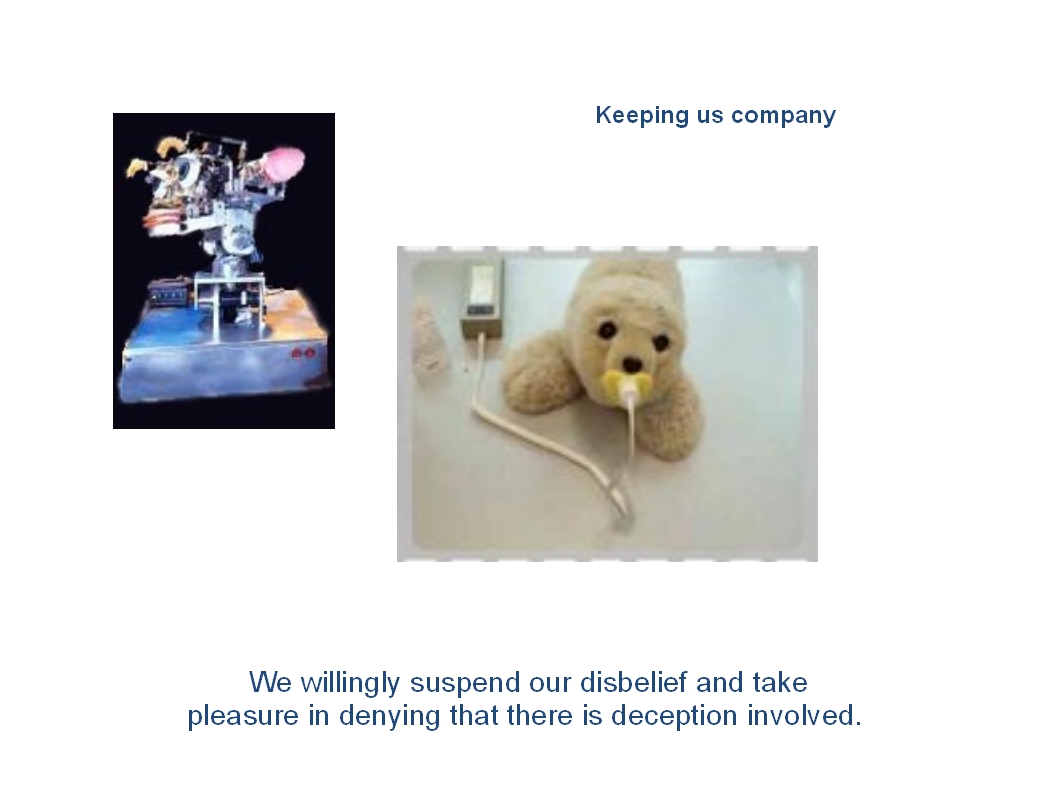Although the robots we see in films such as "I Robot" and "Terminator" are not on the horizon, significant development in recent years turns on the companionship we may have of robots as pets or friends. For example, "Paro" is a therapeutic robot seal, shown to reduce patient stress, improve motivation, and stimulate interaction between patients and their caregivers. It is promoted as a companion to the elderly and those suffering from dementia or autism:
Similar evidence is available concerning prototypes designed specifically to interact with autistic children. A companion robot does not exhibit the dynamism and inconsistencies that are natural to sociality. Rather, their ability to produce consistent cues and responses serves to encourage and achieve meaningful interactions with children who lack in social sensibility.
But companion robots beg the question of what the "comparionship" with them actually stands for, say, between robots and elderly persons or in sexual encounters. The anthropomorphization of technological products is well known and documented. We willingly attribute intentions, emotions or personality to even the simplest mechanism. The question of companionship is explored by Mark Coeckelbergh (2010) who challenges the so-called "deception objection", that a robot is always mere machine and cannot meet social and emotional needs. For example, Sparrow and Sparrow (2006) argue that to rely on robots in the care of the elderly is morally apprehensible. They cannot substitude human contact. But what we learn from Coeckelbergh's argument is that human-robot relations can be seen as something akin to the relationships children form with dolls and teddy bears, or adults with their pets and favourite gadgets. By emulating expressions of vulnerability and empathy, these robots can mirror our own vulnerabilities, evoke our empathy and a sense of "fellow feeling". In other words, the make-belief is an important resource in establishing meaningful and enjoyable relations with robots, however, these relations do not necessarily replace human contact.
